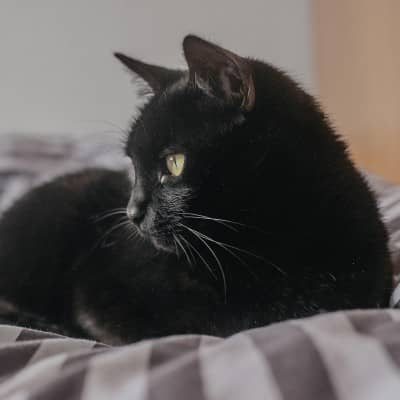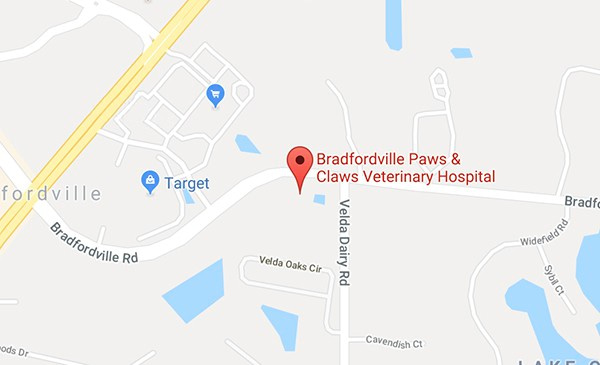As cat owners, we want nothing more than to keep our feline friends healthy and happy for as long as possible. But sometimes, subtle changes in their behavior or health can signal an underlying condition that needs attention. One common health issue affecting older cats is feline hyperthyroidism, a disorder caused by an overactive thyroid gland that can impact your cat’s metabolism and overall well-being.
Recognizing the symptoms early and seeking veterinary care can make all the difference in managing this condition effectively. That’s why routine wellness exams and prompt check-ups at Paws and Claws Veterinary Hospital are so important. Our experienced team is here to help you spot potential health problems early and provide the best care for your cat’s unique needs.
In this post, we’ll walk you through the symptoms, diagnosis, and treatment options for feline hyperthyroidism, so you can be better prepared to keep your cat feeling their best.
What is Feline Hyperthyroidism?
Feline hyperthyroidism is a common hormonal disorder that affects cats, especially those over the age of 8. It occurs when the thyroid gland, located in the neck, produces excessive amounts of thyroid hormones. These hormones regulate your cat’s metabolism, the process by which their body converts food into energy.
When the thyroid gland becomes overactive, your cat’s metabolism speeds up significantly. While this might sound like a good thing, it places a lot of stress on the body’s organs, including the heart, kidneys, and liver. If left untreated, hyperthyroidism can lead to serious health complications and significantly reduce your cat’s quality of life.
Because it primarily affects older cats, it’s important to keep up with regular veterinary check-ups as your cat ages, so any changes in health can be identified early.
Symptoms to Watch For
Hyperthyroidism can be sneaky at first. Many of the signs develop gradually, and it’s easy to mistake them for “normal aging.” However, noticing these changes early and talking to your veterinarian can make a big difference. Common symptoms of feline hyperthyroidism include:
- Weight loss despite a good (or even increased) appetite – This is one of the earliest and most common warning signs.
- Increased thirst and urination – You may notice your cat drinking from places they didn’t before, such as sinks or bathtubs.
- Restlessness or hyperactivity – An overactive thyroid can make cats act more energetic or anxious than usual.
- Digestive issues – Vomiting, diarrhea, or frequent hairballs may become more noticeable.
- Changes in coat quality – A dull coat, matting, or increased shedding can be linked to hormonal imbalance.

How is Feline Hyperthyroidism Diagnosed?
Because these symptoms can overlap with other conditions, the best way to know what’s going on is to schedule an exam with your veterinarian. At Paws and Claws Veterinary Hospital, we use physical exams and diagnostic tests to determine the cause of your cat’s symptoms and start treatment early.
If your cat is showing signs of hyperthyroidism, your veterinarian will start with a thorough physical exam. Often, the thyroid glands may feel enlarged, and changes in weight, coat, or heart rate provide additional clues.
The most reliable way to confirm the condition is through blood tests that measure thyroid hormone (T4) levels. In some cases, our team may suggest additional testing, such as:
- Blood pressure measurements – to check for hypertension caused by the condition.
- Heart evaluation (ECG or ultrasound) – since hyperthyroidism can affect the heart.
- Imaging studies – to rule out other causes of symptoms.
At Paws and Claws Veterinary Hospital, we use modern diagnostic tools to get accurate results quickly. This ensures your cat gets a treatment plan that’s tailored to their unique needs.
Treatment Options
The good news is that feline hyperthyroidism can be managed very effectively once diagnosed. Your veterinarian will discuss which treatment is best for your cat based on their age, overall health, and your lifestyle. Common treatment options include:
- Medication: Daily medication (usually in pill or transdermal gel form) helps control the thyroid hormone levels and manage symptoms.
- Special Diet: Prescription diets that limit iodine intake can sometimes be used to control hormone production.
- Radioactive Iodine Therapy (I-131): This is considered a gold-standard treatment. It targets and destroys overactive thyroid tissue, often curing the condition with one treatment.
Each option has its benefits and considerations. Our team will guide you through the decision-making process and help you choose a plan that works for both you and your cat.
Feline hyperthyroidism is a common condition in older cats, but with early detection and proper treatment, most cats can continue to live long, healthy, and happy lives. The key is not to ignore the small changes; weight loss, restlessness, or a change in drinking habits can all be early warning signs that it’s time for a check-up.
If you’ve noticed any of these symptoms, or if it’s been a while since your cat’s last exam, schedule an appointment with us today. Early action can make all the difference.

